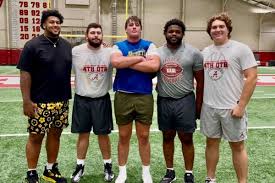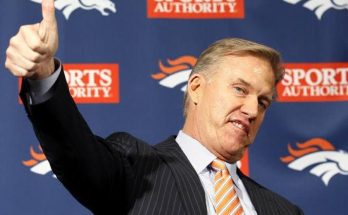The University of Kentucky basketball program has taken a hit on the recruiting trail with the recent news that a key piece of its 2025 class, a four-star point guard, has officially decommitted. The decision comes as a surprise to many within the college basketball landscape and raises questions about the direction of the Wildcats’ future roster under head coach Mark Pope, who is navigating a transitional era for one of the sport’s most historic programs.
The player, regarded as one of the most talented lead guards in the 2025 cycle, announced his decision to reopen his recruitment through a social media post. In his statement, he expressed gratitude toward the Kentucky coaching staff for their belief in him but indicated that after discussions with his family and those close to him, he believes it’s best to explore other options. Though he did not point to any particular reason, the move has already sparked speculation among fans and recruiting insiders alike.
The now-former Kentucky commit was ranked among the top 75 players nationally, with many services placing him within the top 10 at his position. Known for his high basketball IQ, exceptional ball-handling, and ability to both facilitate and score, his commitment had been viewed as a foundational piece of Kentucky’s future backcourt. His departure not only leaves a hole in the Wildcats’ plans but also reopens a highly competitive recruitment process, as several high-profile programs are expected to reengage with the talented prospect.
This decommitment marks a potentially pivotal moment for Kentucky’s 2025 class, which had been gaining momentum after a quieter recruiting stretch. While the Wildcats still have other promising targets and commitments on their board, losing a key guard in such a critical class—particularly during a time of change—adds a layer of urgency to the coaching staff’s efforts to stabilize and strengthen their future outlook.
The timing of the decision adds to its significance. With the summer grassroots season fast approaching, the point guard is now in position to raise his stock even further as coaches, scouts, and media turn their attention to the AAU circuit. He’ll likely receive renewed interest from programs that had previously been involved in his recruitment prior to his commitment to Kentucky. Schools from the ACC, Big 12, and Pac-12 are already rumored to be expressing interest behind the scenes.
As for Kentucky, this situation is yet another reminder of how fluid modern recruiting has become. The introduction of name, image, and likeness (NIL) opportunities, coupled with the ever-growing influence of the transfer portal, has dramatically altered the landscape of college basketball recruiting. Players have more options and leverage than ever before, and as a result, commitments—even those considered solid—can no longer be seen as guarantees.
For Coach Mark Pope and his staff, the decommitment serves as a challenge but also an opportunity to reset and refocus their recruiting priorities. Since taking over the reins in Lexington, Pope has emphasized a mix of traditional recruiting and portal savvy as a strategy to keep Kentucky competitive. However, the loss of a homegrown commitment—particularly at a position as important as point guard—underscores the delicate balance of building a team in today’s game.
There’s also the question of how this will impact Kentucky’s reputation among elite high school prospects. While one decommitment doesn’t define a recruiting class or program, it can lead to ripple effects, especially when it comes from a player who was viewed as a leader and recruiter in his own right. Other players considering Kentucky may now take a step back to reevaluate, especially if they were intrigued by the chance to play alongside the now-decommitted guard.
On the flip side, Kentucky’s pedigree remains a powerful draw. Even in times of transition, the allure of playing in front of 20,000 at Rupp Arena, donning the blue and white, and joining a program with one of the richest traditions in the sport still resonates with young athletes. The Wildcats have shown time and again that they can recover quickly from recruiting setbacks, often pivoting to alternative targets or using the transfer portal to shore up talent gaps.
Historically, Kentucky has also proven that it doesn’t always need top-ranked recruiting classes to succeed. While five-star talent has certainly helped fuel the program’s success in the past, the rise of developmental prospects and the changing nature of the college game—where experienced players can sometimes have a greater impact than raw potential—means that losing a recruit, even one of this caliber, isn’t necessarily a death knell.
Still, for fans who had grown excited about the 2025 class and the promise it held, this news is a clear disappointment. Many had already begun to imagine the former commit orchestrating the Wildcats’ offense, leading fast breaks, and creating scoring opportunities for teammates. Now, those visions must be put on hold as the staff regroups and evaluates new options.
In the short term, attention will turn to Kentucky’s remaining 2025 targets, and whether Pope and his staff can lock down another top-tier point guard. There are a handful of high-level prospects still uncommitted, and the Wildcats are believed to be in the mix for several of them. In the meantime, expect Kentucky to also monitor potential portal entries that could serve as a bridge until the 2025 class arrives.
Another angle worth watching is how this move could affect Kentucky’s current roster makeup. If the staff believes another guard is needed sooner than expected, it could lead to further recruiting movement this spring or summer. Already, the college basketball offseason has seen an uptick in player movement, with several major programs aggressively pursuing backcourt reinforcements. Kentucky may find itself competing in a very active and competitive marketplace.
From a broader perspective, this decommitment also reflects the changing nature of commitments in general. As players increasingly prioritize flexibility, exposure, and opportunity, fewer and fewer commitments feel truly “locked in” until the ink dries on a national letter of intent. The growing role of personal brands, NIL, and program fit all contribute to a dynamic in which decisions are rarely final until players are actually on campus and enrolled.
Ultimately, while the loss of this 2025 four-star point guard is a setback for Kentucky, it is not a death sentence. The program’s infrastructure, visibility, and tradition give it tools that few others possess. The challenge now will be for the staff to refocus its efforts, reassure other prospects, and demonstrate that the Wildcats remain a force to be reckoned with on the recruiting trail.
In the days to come, more clarity may emerge regarding the player’s decision and what schools are next in line for his services. Kentucky fans will be watching closely, not only to see where the former commit lands but also to gauge how their team responds. With the college basketball calendar now running year-round thanks to offseason developments and recruiting updates, the next chapter in this story is likely just around the corner.
For now, the Wildcats are left to regroup, retool, and refocus—with the understanding that in the ever-evolving world of modern college basketball, change is the only constant.



